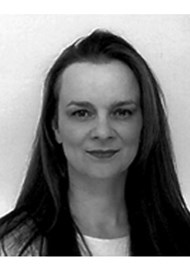The author examined 108 photographs of faces taken in an exact front view, in order to look for different patterns of facial shapes: round, square, heart shaped, oval and long. The author recognised that this was a qualitative analysis and different observers may have different opinions on facial shape. The author found that a round facial shape (38.9%) was most common, square (29.6%), long (13.9%), oval (12%) and a heart shaped face (5.6%) was least common. A quantitative analysis of facial symmetry was also performed. This involved performing symmetrical combinations of mirror images of the left half of the face and the right half of the face. These were compared with the original facial photograph in triplets. Computer software was used to determine facial perimeter and area, nose length, face length, pupil area and perimeter. The degree of symmetry of the original image was calculated with respect to the combined images of the left half of the face and the right half of the face. The author found that all faces have some degree of asymmetry, with approximately a 35% difference in the degree of asymmetry of the real image compared to right-right and left-left combinations. Pupils are also asymmetrical with respect to their area and perimeter, with a 15% difference in symmetry. This paper contributes to the literature on facial analysis. In conclusion, faces are not alike.




